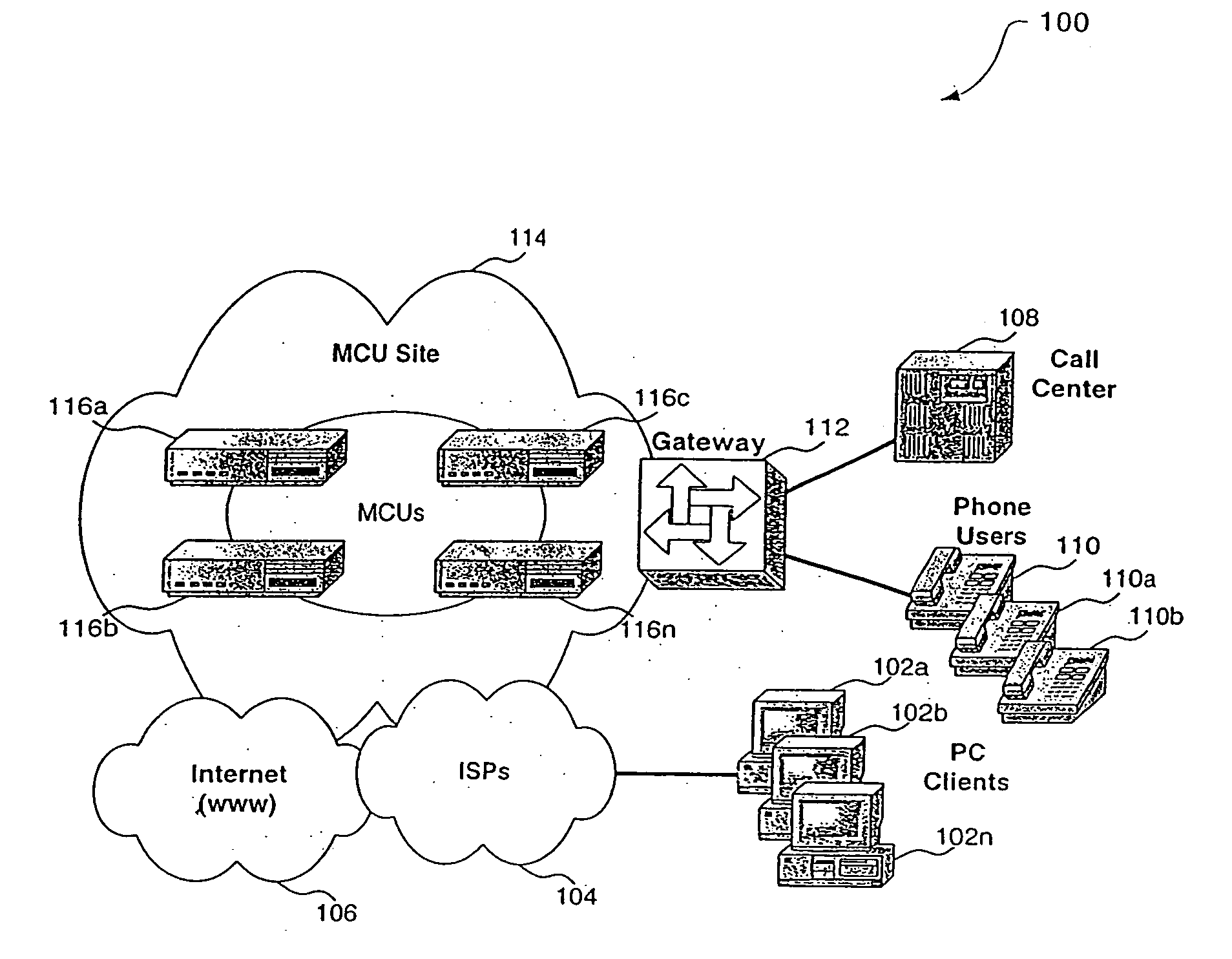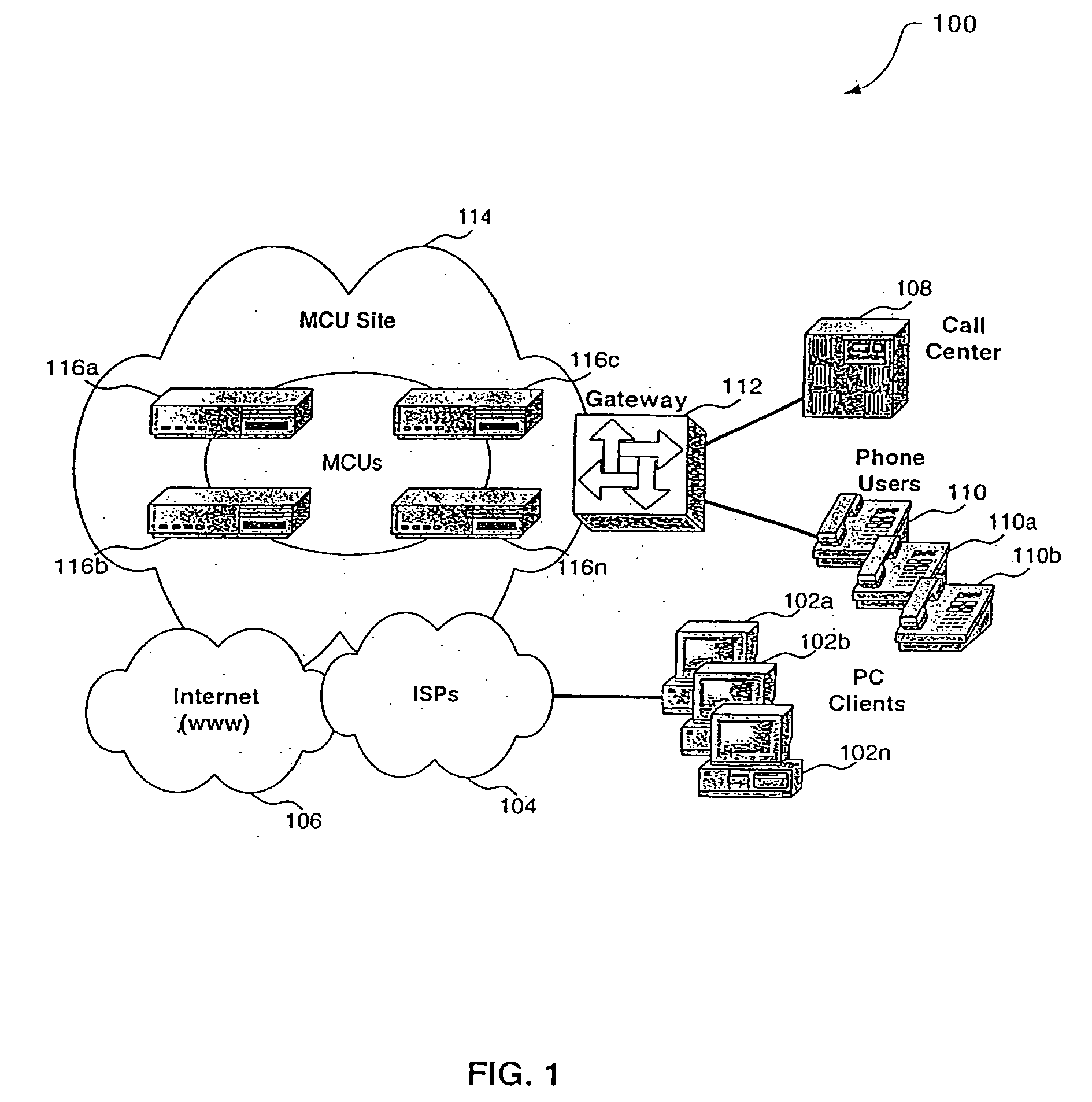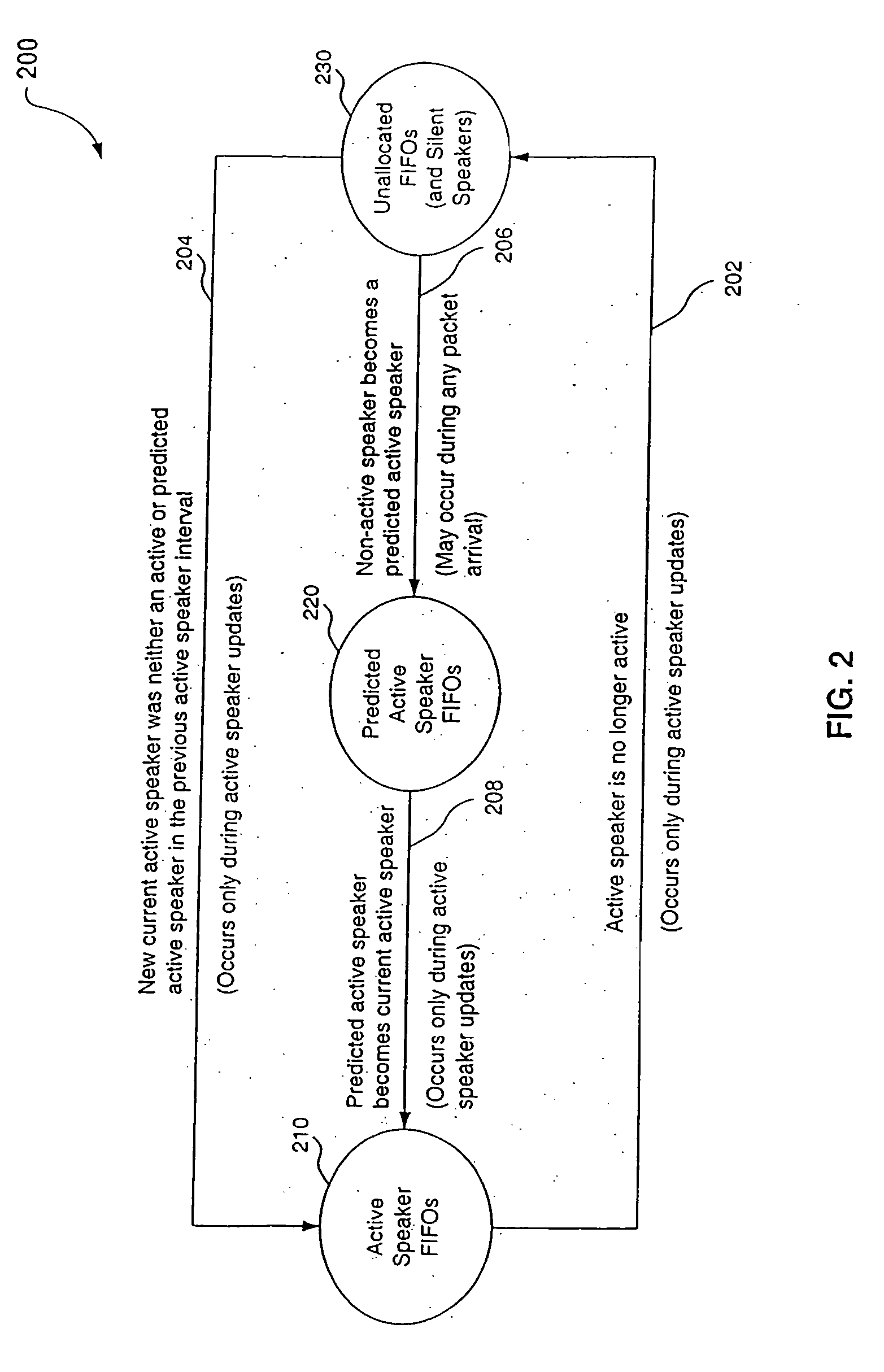Efficient buffer allocation for current and predicted active speakers in voice conferencing systems
- Summary
- Abstract
- Description
- Claims
- Application Information
AI Technical Summary
Benefits of technology
Problems solved by technology
Method used
Image
Examples
Embodiment Construction
I. System Architecture Overview
This present invention is directed to a method and computer program product for the efficient first-in first-out (FIFO) (i.e., queue) allocation for current and predicted active speakers in voice conferencing systems that minimizes the loss of audio data for speakers as they switch from “non-active” to “active” status.
In a preferred embodiment of the present invention, a service provider supplies the infrastructure (i.e., a site of MCUs), agreement terms and facilities so that clients (i.e., participants) who subscribe to their conferencing services can take part in a multi-party audio conference application. The service provider would also provide customer service, support and billing as will be apparent to one skilled in the relevant art(s) after reading the description herein. The clients would connect to the server using whatever equipment (e.g., PC, telephone, etc.) and protocol (e.g., PSTN, SIP, H.323, etc.) they currently have access to.
Ref...
PUM
 Login to View More
Login to View More Abstract
Description
Claims
Application Information
 Login to View More
Login to View More - R&D
- Intellectual Property
- Life Sciences
- Materials
- Tech Scout
- Unparalleled Data Quality
- Higher Quality Content
- 60% Fewer Hallucinations
Browse by: Latest US Patents, China's latest patents, Technical Efficacy Thesaurus, Application Domain, Technology Topic, Popular Technical Reports.
© 2025 PatSnap. All rights reserved.Legal|Privacy policy|Modern Slavery Act Transparency Statement|Sitemap|About US| Contact US: help@patsnap.com



